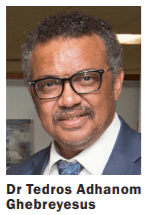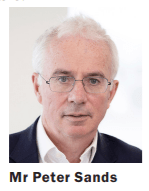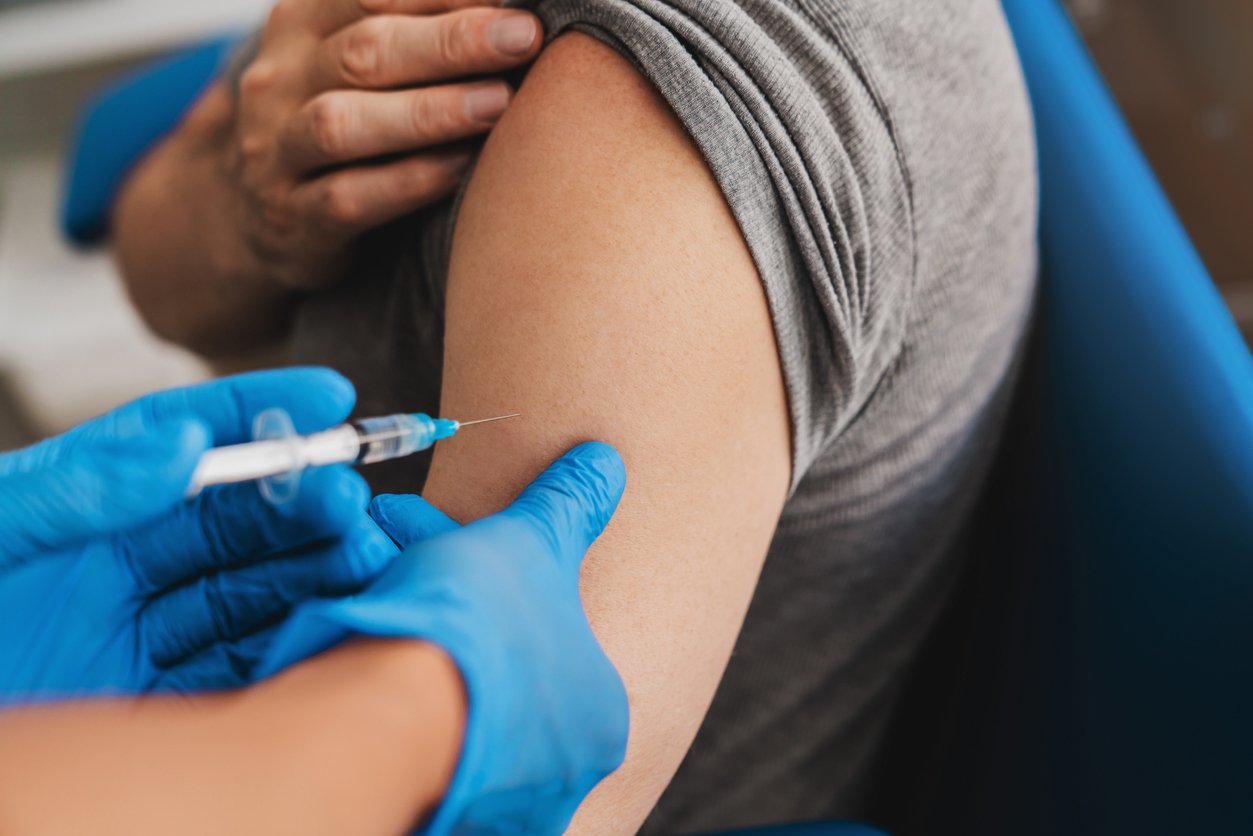While the development of the world’s first vaccine against malaria is a momentous breakthrough, getting it into the arms of those who need it is going to be an enormous challenge. Bette Browne reports
On 6 October 2021, the World Health Organisation (WHO) was exultant in recommending the roll-out of the world’s first malaria vaccine. However, when medical breakthroughs pertain to the developing world, the challenges are vast. In this case delivering the vaccine will face major hurdles – not least the cost. Nearly half the world’s population live in areas at risk of malaria transmission, encompassing 87 countries and territories. The acute febrile illness is caused by Plasmodium parasites, which are spread to people through the bites of infected female Anopheles mosquitoes.
The first symptoms – fever, headache and chills – usually appear 10-to-15 days after the infective mosquito bite and may be mild and difficult to recognise. But if left untreated P. falciparum malaria can progress to severe illness and death within 24 hours. There are five parasite species that cause malaria in humans and two of these species
– P. falciparum and P. vivax – pose the greatest threat. P. falciparum is the deadliest malaria parasite and the most prevalent on the African continent. P. vivax is the dominant malaria parasite in most countries outside of sub-Saharan Africa.
Annually, there are over 230 million cases of malaria globally and, in 2019, the disease killed more than 400,000 people, mainly in developing countries in Africa, many of which have experienced conflict. Experts say conflict zones often end up at the bottom of the global vaccine distribution list, because reaching these areas is more difficult, dangerous and expensive. Malaria is a less prominent cause of death in South America and South Asia, but can cause substantial disease and incapacitation. In areas with high transmission, the most vulnerable groups are young children, who
have not yet developed immunity to malaria, and pregnant women, whose immunity has decreased in pregnancy.
RTS,S vaccine
Last October the world applauded the WHO announcement on the RTS,S malaria vaccine, also known as Mosquirix. “This is a historic moment. The long-awaited malaria vaccine for children is a breakthrough for science, child health and malaria control,” said WHO Director-General Dr Tedros Adhanom Ghebreyesus. “Using this vaccine on top of existing tools to prevent malaria could save tens of thousands of young lives each year.”

Malaria remains a primary cause of childhood illness and death in sub-Saharan Africa and more than 260,000 African
children under the age of five die from the disease annually.
WHO Regional Director for Africa, Dr Matshidiso Moeti, saw the announcement as a “glimmer of hope” for the continent. “For centuries, malaria has stalked sub-Saharan Africa, causing immense personal suffering,” Dr Moeti said. “We have long hoped for an effective malaria vaccine and now for the first time ever, we have such a vaccine recommended for widespread use. Today’s recommendation offers a glimmer of hope for the continent, which shoulders the heaviest burden of the disease and we expect many more African children to be protected from malaria and grow into healthy adults.”
Significant advances have been made against malaria, but these have come primarily through the widespread use of insecticide-treated bed nets, indoor spraying, rapid diagnostic testing, and artemisinin-based combination therapies. However, mosquitoes are developing resistance to such insecticides. In southeast Asia, the disease is also becoming resistant to malaria drugs and scientists are concerned this resistance will spread to Africa in the future.
The vaccine is therefore vital in the battle against the disease and was a triumph that was over half a century in the making. Malaria vaccines have been in development since the 1960s, with substantial progress being made over recent decades.
In July 2015 the European Medicines Agency gave a positive regulatory assessment of the vaccine for five-to-17-montholds. However, the WHO recommended in October 2015 that it be further evaluated in large-scale pilot studies. While the pilots will continue until 2023, the WHO says sufficient data on safety and efficacy have been collected to allow for a broad recommendation for the use of the vaccine.
The WHO’s recommendation for wider routine use of the RTS,S malaria vaccine is based on data gathered through the malaria vaccine implementation programme (MVIP), which took place in Kenya, Ghana and Malawi over a two-year period, and a clinical trial around the seasonal delivery of the vaccine in Mali and Burkina Faso – countries that experience high seasonal variation in malaria transmission.
The RTS,S pilots achieved and maintained good coverage levels, despite the Covid-19 pandemic. As of September 2021, over two years after the start of vaccinations, more than 2.3 million RTS,S doses have been administered across the three countries and more than 800,000 children have been reached with at least one dose of the vaccine, according to Gavi, The Vaccine Alliance. The pilots provided an opportunity to evaluate the feasibility of delivering four doses of
RTS,S in real-life settings, where the vaccine was successfully rolled into existing immunisation programmes and reduced hospitalisations from severe malaria by 30 per cent.
The vaccine will be a complementary malaria control tool to the core package of WHO-recommended measures for malaria prevention. These measures include the routine use of insecticide-treated bed nets, indoor spraying with insecticides, malaria chemoprevention strategies, and the timely use of malaria testing and treatment.
Obstacles
The development of a vaccine has faced several obstacles, according to Gavi. “Some of the obstacles for the
development of a malaria vaccine include the lack of a traditional market for the vaccine and the technical complexity of developing any vaccine against a parasite,” biologist Dr Marta Tufet (PhD), Gavi’s Head of Policy, told the Medical Independent (MI).

“Malaria parasites are complex and have developed effective mechanisms to evade our immune system. There are also gaps in our understanding of the immune response to malaria infection.” The US Centres for Disease Control and Prevention (CDC) agree. “Malaria parasites have a complex life cycle and there is poor understanding of the complex immune response to malaria infection. Malaria parasites are also genetically complex, producing thousands of potential antigens.
“Unlike the diseases for which we currently have effective vaccines, exposure to malaria parasites does not confer lifelong protection. Acquired immunity only partially protects against future disease and in many cases people still become infected with the parasite. Malaria infection can persist for months without symptoms of disease.”
Funding
While scientists and medical professionals ultimately prevailed in developing a vaccine, getting it to those who need it will be equally difficult without adequate funding – something about which organisations like Gavi are painfully aware. Ireland, too, is conscious of the importance of funding. “It is unacceptable that malaria can be prevented and treated but still causes over 400,000 deaths a year in the world’s poorest countries,” said Minister of State for Overseas Development Aid and the Diaspora,Colm Brophy, welcoming the announcement of the vaccine and highlighting Ireland’s funding support.
“Ireland, through the Irish Aid programme, is proud to be a funding partner of WHO, Gavi and the Global Fund to Fight AIDS, TB [tuberculosis], and malaria, which together supported the development of the vaccine and its successful trials. This is part of Irish Aid’s ongoing investment in global public health, which will exceed €100 million this year. Ireland has a seat on the Board of the Global Fund, which helps us ensure that this vaccine will reach as many children as possible.”
Global Fund Executive Director Mr Peter Sands also emphasised the need for significant funding to back delivery of the vaccine. “We welcome this new tool in the fight against malaria. In countries where the Global Fund invests, we have reduced malaria deaths by 45 per cent since 2002 with testing, treatment and prevention tools, such as mosquito nets. In the vaccine pilots, the RTS,S vaccine was most effective when used together with these existing tools. Significant additional resources will be necessary to enable wide deployment of the vaccine alongside other innovations, and as part of a sustained and comprehensive response in the countries that need it the most.”

Gavi’s Head of Policy agrees, but is aware that keeping the world focused on getting a vaccine to the developing world is never easy. Sufficient funding and resources are absolutely necessary, Dr Tufet told MI. “The Covid-19 vaccine experience has demonstrated how fast vaccine development can proceed when there is a true global emergency and sufficient resources, and that the vaccine development process can be accelerated substantially without compromising on safety.”
Supporting the malaria vaccine is also in the self-interest of many developed countries, which remain indirectly vulnerable to a disease that is a plane journey away for travellers. During the last century, more than 50 countries managed to eradicate the disease. But although malaria has ceased to be an endemic disease in developed countries, the increase in trips to endemic areas in recent decades means that imported malaria cases are becoming more common, according to an article in the Malaria Journal in December 2019.
The article stated that every year Spain sees more than 500 such cases. In the United States over the past few decades, the average number of malaria cases reported to the CDC has steadily increased and an average of 1,773 malaria cases are now reported in each year. “Among those, about 300 cases present with severe malaria,” the agency said. “Intravenous artesunate, the frontline treatment for severe malaria, is available from 18 CDC quarantine stations, strategically located at (US) airports with high flight volumes.” It describes the prevention and treatment of severe malaria as a “global health security priority”.
The CDC also pointed out that malaria can impose substantial costs on both individuals and governments. Costs to individuals and their families include purchase of drugs for treating malaria at home, lost days of work, absence from school, expenses for preventive measures and, most tragically of all, expenses for burial in case of deaths. Costs to governments include maintenance, supply and staffing of health facilities; purchase of drugs and supplies; public health interventions against malaria, such as insecticide spraying or distribution of insecticide-treated bed nets; lost days of work with resulting loss of income; and lost opportunities for joint economic ventures and tourism.
“Direct costs, for example, illness, treatment, premature death, have been estimated (globally) to be at least $12 billion (€10.5 billion) per year,” the CDC stated. “The cost in lost economic growth is many times more than that.”
President’s malaria initiative
Coinciding with the successful emergence of the vaccine, the US also announced in October a new five-year strategy to end malaria. The US President’s malaria initiative (PMI) aims to end malaria within a generation, contribute to the global goals of saving more than four million lives, and avert one billion cases by 2025.
Since it was launched 15 years ago, the initiative led by the United States Agency for International Development (USAID) is credited with helping to save 7.6 million lives and prevent 1.5 billion malaria infections in the last two decades.
“PMI’s five-year strategy aims to continue to save lives, address health inequities, and improve disease surveillance and health security,” according to a USAID statement. “The strategy will focus on reaching the unreached, strengthening community health systems, keeping malaria services resilient, investing locally, and supporting innovation.”
The agency said Covid-19, climate change and conflict have reversed some of the hardwon gains made over the past two decades – and they continue to threaten progress. “This turns back the clock for many countries fighting to reduce deaths and eliminate the fatal disease. As one of the largest donors in the global fight against malaria, PMI works in countries that account for 80 per cent of the world’s malaria burden.
Through this strategy, PMI will continue to partner with countries, donors and others to sustain its life-saving work.” The strategy has three specific objectives. These are to reduce mortality by 33 per cent from 2015 levels in high-burden PMI partner countries; reduce malaria morbidity by 40 per cent from 2015 levels in PMI partner countries with a high and moderate malaria burden; and bring at least 10 PMI partner countries toward national or subnational elimination and assist at least one country in the Greater Mekong Sub region to eliminate malaria. This region spans Cambodia, Laos, Myanmar, Thailand, Vietnam, and the southern province of Yunnan in China.
Since 2005, PMI said it has invested $8 billion (€7 billion) in hundreds of millions of mosquito-killing nets and sprays, life-saving malaria tests and medicines, and health workers in clinics and communities.
The WHO has even more ambitious plans. It has targeted malaria for elimination in at least 35 countries by 2030 and reducing death rates by 90 per cent. The UN Sustainable Development Goals have set a target of ending epidemic levels of malaria by 2030. Global spending on malaria stands at $2.7 billion (€2.4 billion) per year. Following the WHO recommendation, global stakeholders including Gavi are considering how to finance a new malaria vaccination programme for countries in sub-Saharan Africa, Dr Tufet told MI.
“The Gavi board decision is a crucial next step in order to be able to open up a funding window so that countries that decide to incorporate the malaria vaccine in their routine immunisation and malaria control programmes, are able to apply for support. “Gavi support will help ensure the vaccine is accessible to countries in Sub-Saharan Africa that make a decision to roll it out. Additionally, ahead of the decision by the Gavi board, an innovative financing agreement between Gavi, MedAccess and GSK guarantees continued production of the RTS,S antigen for the malaria vaccine. The
partnership aims to address vaccine supply challenges and reduce barriers to initial roll-out (of the vaccine).”
Financing for the pilot programme has been mobilised through an unprecedented collaboration among three key global health funding bodies: Gavi, the Vaccine Alliance; the Global Fund to Fight AIDS, Tuberculosis and Malaria; and Unitaid. “Gavi raised funding for its 2021-2025 strategic period at the Global Vaccine Summit, which took place in June 2020,” Dr Tufet told MI.
“Some of it could be used to support a potential malaria vaccine programme for this period, should Gavi board make a decision in its favour. In the longer-term, malaria prevention and control has been historically underfunded, and a new tool could be an opportunity for the global health community to consider how this area could be better funded.” Such under-funding will have to be comprehensively addressed if malaria is to be overcome in the developing world. The new vaccine will undoubtedly help to boost the WHO’s target of reducing global malaria incidence and mortality rates by at least 90 per cent by 2030.
But without substantial and sustained global funding to deliver this breakthrough vaccine, the world will risk
falling far short of this important goal.
The strategy, vaccine and disease burden
The WHO Global technical strategy for malaria 2016-2030, updated in 2021, provides a technical framework for all malaria-endemic countries. It is intended to guide and support regional and country programmes as they work towards malaria control and elimination. Its targets include:
- Reducing malaria case incidence by at least 90 per cent by 2030.
- Reducing malaria mortality rates by at least 90 per cent by 2030.
- Eliminating malaria in at least 35 countries by 2030.
- Preventing a resurgence of malaria in countries that are malaria-free.
The vaccine
- The malaria vaccine, RTS,S, acts against P. falciparum, the most deadly malaria parasite globally and the most prevalent in Africa.
- The malaria vaccine implementation programme is generating evidence and experience on the feasibility, impact and safety of the RTS,S malaria vaccine in real-life, routine settings in selected areas of Ghana, Kenya and Malawi.
- The pilot programme will continue in the three pilot countries to understand the added value of a fourth vaccine dose and to measure longerterm impact on child deaths.
- The malaria vaccine implementation programme is coordinated by WHO and supported by in-country and international partners, including PATH, UNICEF and GSK, which is donating up to 10 million doses of the vaccine for the pilot.
- The RTS,S malaria vaccine is the result of 30 years of research and development by GSK and through a partnership with PATH, with support from a network of African research centres.
Disease burden
- The WHO African region continues to carry a disproportionately high share of the global malaria burden. In 2019, the region was home to 94 per cent of all malaria cases and deaths. Six countries accounted for approximately half of all malaria deaths worldwide: Nigeria (23 per cent), the Democratic Republic of the Congo (11 per cent), United Republic of Tanzania (5 per cent), Burkina Faso (4 per cent), Mozambique (4 per cent) and Niger (4 per cent).
- Over the last two decades, expanded access to WHOrecommended malaria prevention tools and strategies, including effective vector control and the use of preventive antimalarial drugs, has had a major impact in reducing the global burden of this disease.
- Progress in global malaria control is threatened by emerging resistance to insecticides among Anopheles mosquitoes. According to the latest WHO World Malaria Report, 73 countries reported mosquito resistance to at least one of the four commonly used insecticide classes in the period 2010-2019. In 28 countries, mosquito resistance was reported to all main insecticide classes.
- In 2019, a total of 27 countries reported fewer than 100 indigenous cases of the disease, up from six countries in 2000. Countries that have achieved at least three consecutive years of zero indigenous cases of malaria are eligible to apply for the WHO certification of malaria elimination. Over the last two decades, 11 countries have been certified by the WHO Director-General as malaria-free. (Sources: WHO, Gavi Vaccine Alliance, 2020 World Malaria Report)













Leave a Reply
You must be logged in to post a comment.